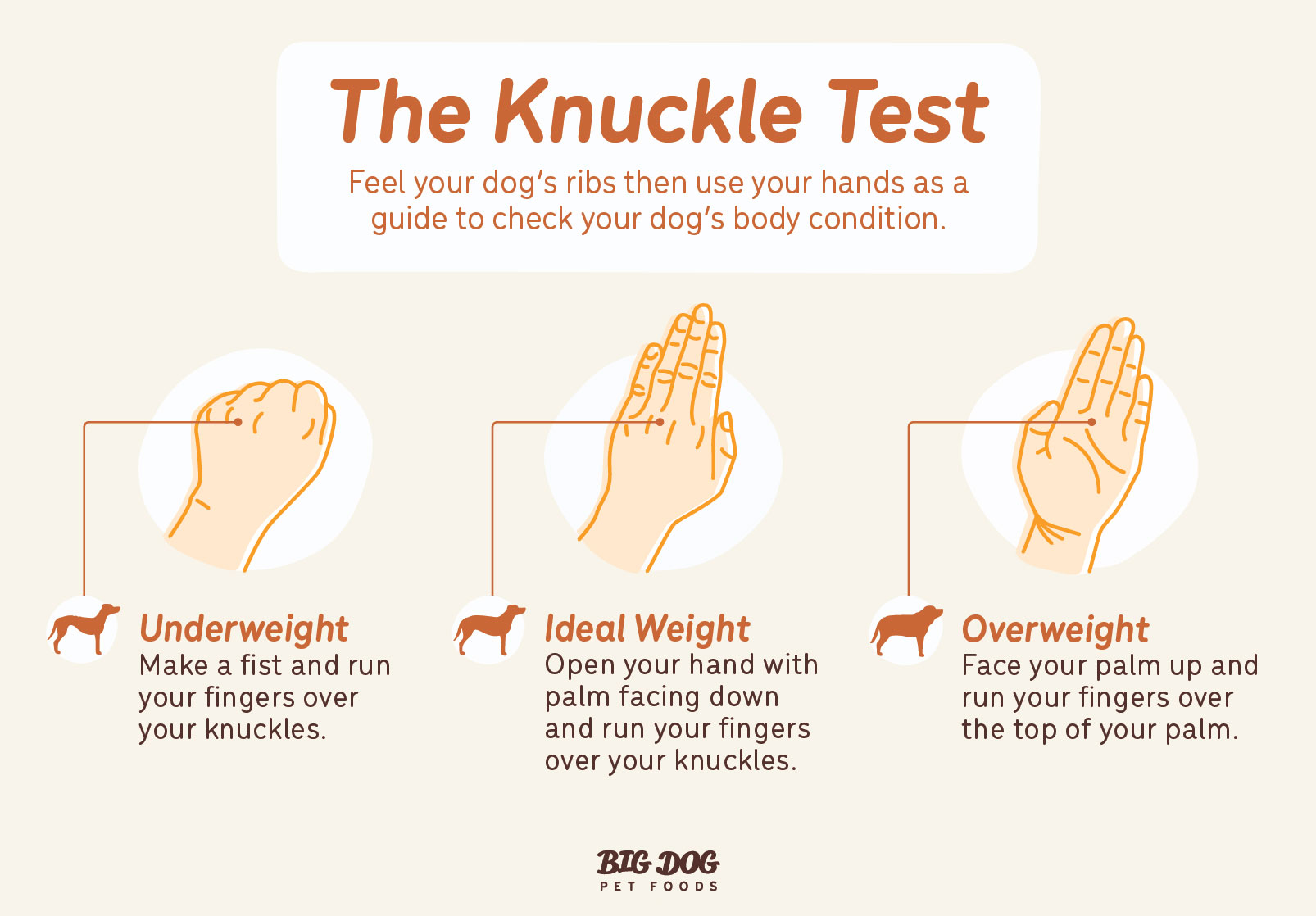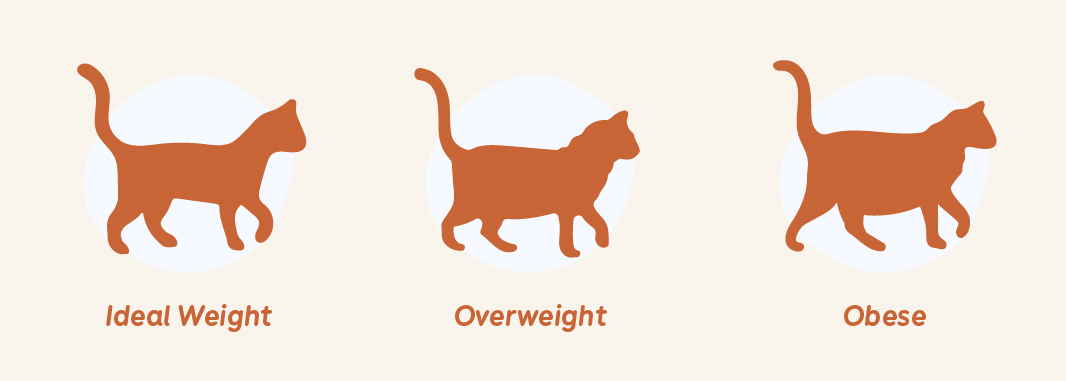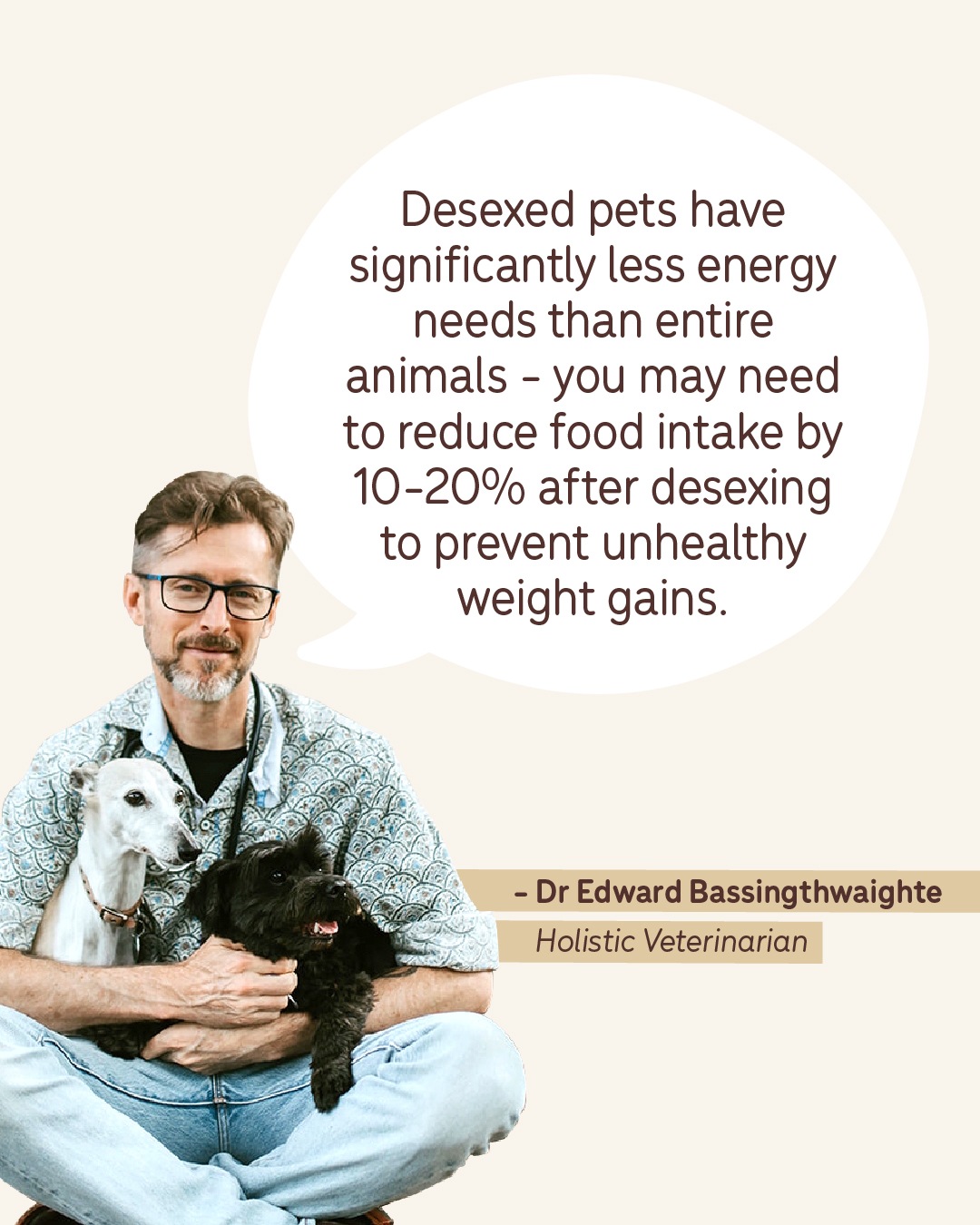Ideal weight for dogs (and cats)

By Dr Edward Bassingthwaighte, Holistic Veterinarian
As a vet, I’ve seen a lot of overweight pets come into my clinic over the years. Obesity is shockingly common in domestic pets. 41% of dogs and 32% of cats in Australia are overweight. That’s a LOT of chubby, well padded, porky, ‘big boned’ pets out there who seriously need to lose weight sooner rather than later.
Obesity in pets is defined as a condition of malnutrition. Any degree of being overweight has serious health implications for our companion animals.
Obesity is actively harmful! It causes or contributes to:
- Excess wear and tear on the body - especially the joints, accelerating the onset and development of arthritis
- Increased risk of cruciate rupture and bone fractures
- Obesity is an inflammatory condition - excess fat secretes hormones that cause inflammation in the joints and throughout the body
- Increased risk of Intervertebral Disc Disease
- Tracheal collapse
- Laryngeal paralysis
- Endocrine diseases like Diabetes and Hypothyroidism
- Urinary tract disorders- increases the risk of Urinary Tract Infections and Bladder Stone formation
- Impairs respiration/breathing, may lead to high blood pressure
- Exercise and heat intolerance
- Depressed Immune function
- Increases risk during anaesthesia
- Increases in undesirable behaviour and anxiety
- Increased soft tissue pain
- Liver disease
- Increased cancer risk
Quite a list of reasons why you need to urgently
- work out if your pet is overweight, and
- if you discover they are carrying too much weight, you need to get your pets on a diet that works ASAP!
Here’s how to get your pet to a healthy weight!
Your first step is to assess your dog’s weight (I’ll talk about cats in a minute). You should be able to easily feel the bumps of your dog's ribs with light touch when you run your finger tips from head to tail, in the middle of the rib cage (from top to bottom) from the shoulder blades back towards the tail.
If you feel sideways across the back of your hand, just behind your knuckles, moving towards your wrist, that’s what healthy weight dog ribs should feel like if they are on the leaner side of healthy body weight.
If you place your hand palm up, straighten out your fingers, and run your finger tip across the flat of your palm just before where your fingers come out, that will feel like the ribs of a dog whose weight is on the generous side of healthy.
If you can’t easily feel those ribs, your dog needs a diet!

How to check if your dog is a healthy weight
(You should be able to see just a little of the last few ribs, as well, in a healthy dog with a short coat. Dogs in ‘working condition’ may show more ribs.)
Cats are a bit harder- they don’t tend to store fat on their ribs until they are quite profoundly obese. Before they start stacking it onto the ribs, they build up a fat pad on the belly, more down in between the legs. If you feel a fat pad there, then your cat is probably a bit chubby- by the time the ribs are well covered, they are really chubby.

Is your cat overweight?
Here's The Healing Vet's miracle diet.
It will always work if you follow the instructions (unless your dog or cat has some other kind of disease like hypothyroidism - if you don’t get any weight loss in 4-6 weeks, you’ll need to see your vet to rule out other diseases).
If you’re feeding a fresh, healthy, whole foods diet (preferably raw) - BARF type diet, you’ll want to start your diet feeding your well-padded friend 3% of their desired body weight each day of the food. Often the desired body weight will be a bit of a guess, and that’s ok.

You should weigh ALL the food going into your pet - meals, bones, treats and treats/extras. You’ll need an objective measure to see how your pet responds. The best is to weigh them on the scales (at the vet clinic is easiest) every two weeks and track if there is weight loss, and how much. Slow and steady weight loss is better. (Cats especially should not be put onto ‘hard’ diets or starved. They can get very sick if you go too hard.)
If you don’t have access to scales, you can use a dressmaker's tape, measure around the chest just behind the front legs while standing. That’s another good objective measurement.
Make sure you calculate 3% of the desired bodyweight- this is the amount of food to give your pet daily..
Something else to remember - desexed pets have significantly less energy needs than entire animals - you may need to reduce food intake by 10-20% after desexing to prevent unhealthy weight gains.
Meals include bones, by the way. They have a lot of calories. And all treats need to be weighed too! (Unless they are low calorie things like carrot chunks, or small amounts of fruit like apples.)
Then comes the most important (and often most challenging) part of the whole dieting process. That hungry, sad, poor me puppy dog looks like you're going to cop, again and again. You have to be strong, because your dog will need to be hungry for weeks or months to get the weight off. Cats might yowl and complain.
The good news is that they will usually get used to it in a few weeks or months. Then you track their weight carefully - and remember, if there is no weight loss after 4-6 weeks, reduce the amount of food by 10%.
Repeat until you’re getting steady, measurable weight loss. If you want to accelerate weight loss, do a full fast one day a week (this happens for my 2 dogs and 2 cats every week). If that’s too emotionally difficult, you can do a small meal of bone broth only on the fast day (be careful not to use one with onions in it).
If you reduce by 10% twice and no response, then definitely get to your vet and have a workup to check for metabolic diseases. If there are no metabolic diseases, you will simply have to keep gradually reducing the food intake until there is weight loss.
You may have to reduce the amount as your pet loses weight. You’ll also get a better idea of what the healthy weight actually is. If you have multiple animals, you may need to feed them separately to make sure that no-one is hogging more than their share of the food on offer.
There it is, easy as pie! Until your dog gives you that look!
Increasing exercise can help, but there will nearly always have to be calorie restriction to get meaningful weight loss. Once you hit the target weight, you’ll need to play around with amounts until you get a steady, healthy weight.
About the Author - Dr Edward Bassingthwaighte.

Dr Edward Bassingthwaighte is a holistic veterinarian, and a world-leading expert in silent pain in pets. Dr Edward is passionate about fresh raw whole foods for dogs. He is the founder of the Whole Energy Body Balance method- a profoundly healing bodywork modality for pet parents and pet wellness professionals to relieve silent pain, anxiety and trauma in pets.
